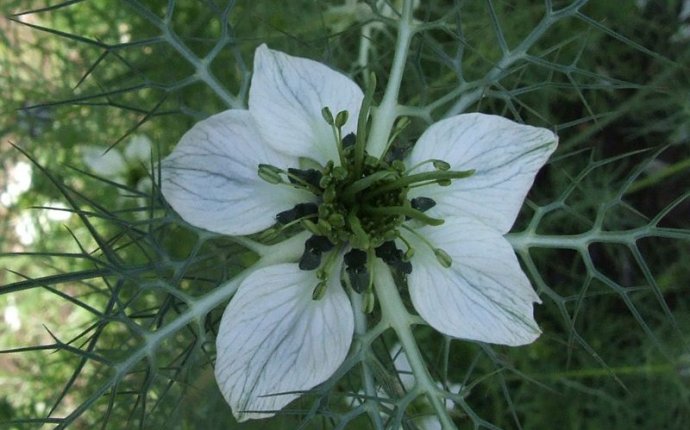
Nigella sativa Ayurveda
An Ayurvedic Perspective on Candidas
By Monica Yearwood
Candidas is a term that encompasses all strains of yeast. It is naturally occurring and can be found in small amounts through out a healthy human body. Abnormal levels of yeast are usually from the strain Candidas albicans. C. albicans abnormalities are associated with suppressed immune system, antibiotic use, deficient gut flora, infections, poor personal hygiene, various disease, skin exposure, sexual contact with an infected partner, several types of cancer, and diabetes. Symptoms can include gastrointestinal disturbances, oral thrush, rashes on the skin and genital area, vaginitis, and bladder infections.
3-Types of Candidas by Dosha
Vata type C. albicans infections usually provoke symptoms in the large intestine and produce bloating, gas, and constipation, dry skin, insomnia, itchy ears, and intense fatigue. Pitta-type C. albicans usually provoke symptoms in the liver and blood, producing symptoms such as acne, skin irritations, rashes, diarrhea and irritability. Kaphas-type C. albicans usually provoke symptoms in the stomach and lymph, producing excess mucus, wet cough, urinary tract infections, eczema, fatigue, psoriasis, and weight gain. Treatment requires the systemic reduction of C. albicans overgrowth coupled with the population of healthy gut bacteria. C. albicans is eliminated with anthelmintic herbs that kill yeast, reduction of sugars which feed yeast, and supplemental probiotics to restore gut bacteria.
In Ayurveda, C. albicans is called Krumi, “parasite, ” and therefore, treated as a parasitic infection. Systemic C. albicans infection is the result of several years of inappropriate lifestyle and inflicting behavior, and seldom the result of recent choices. Currently Candidas overgrowth is the fourth most prominent bloodstream infection in the United States. It takes time to grow in the body, and therefore, can be time consuming to eradicate. Like many gut imbalances, C. albicans manifests when a pathogenic opportunity is coupled with weakened immunity, due to inadequate gut flora. C. albicans is heavily linked to pharmaceuticals that decrease gut flora such as antibiotics, muscle relaxants, painkillers, acne medications, and oral birth control pills. Poor diet, such as processed foods, caffeine and alcohol, destroys beneficial gut bacteria without replenishing beneficial bacteria.
Neem To Treat Candida
Oil from neem actively destroys bacteria such as M. tuberculosis, streptomycin- resistant strains, and vaginosis. Clinical studies have used neem both topically and internally to destroy bacteria. In 2003, John Wile & Sons, Ltd confirmed the use of nigella sativa seed extracts reduced the infection of C. albicans in every organ afflicted in infested mice. There was a systemic 5-11 fold reduction of C. albicans, dependent on the afflicted organ. Neem sticks have been used for thousands of years in both India and China for dental health. The antifungal and antibacterial effects of neem extracts are of particular interest
Sugar and Candida
All forms of yeast use sugar as main sources of energy and survival. C. albicans are most likely to colonize in the human gut where they ferment sugars to use as energy sources. C. albicans sufferers often find themselves driven by the yeast imbalance to consume, and crave large amounts of sugary foods. The protein in Candida Albicans called HGT4 is suspected to be the primary sugar sensor in human serum, and greatly contributes to the degree of pathogenicity of C. albicans. It is estimated over 20 different proteins in C. albicans work to sense different sugars, such as fructose, glucose and mannose in human serum. Since sugar is the primary energy and life source for C. albicans, it has evolved to develop a complex sugar-sensory network, and therefore compete with host nutrient needs. C. albicans are most likely to colonize in the human gut where they ferment sugars to use as energy sources. Sugar avoidance, is part of many Candidas reducing protocols. Dependent on the degree of systemic infection, molds and fungi may need to be avoided as well, including mushrooms, and most nuts where mold exposure is likely.
Gymnema ”The Sugar Destroyer”
Gymnema Sylvestre is a common herb used in ayurveda to counter the negative effects of sugar consumption. Translated to mean “sugar destroyer, ” Gymnema is used to curb craving for sugar, and also reduce the consequences of consuming sugar, and traditionally used to treat type 2 diabetes. Gymnema increases insulin secretion and muscle cell receptivity to insulin. A 2007 study compiled by the Nordic Pharmacological Society, showed gymnema was as affective as the pharmaceutical drug glibenclamide at reducing cholesterol and unhealthy triglycerides commonly found in those with diabetes . Increased insulin production assists in the absorption of sugar, and decrease availability to C. albicans.
Sugar reducing diets are advised, coupled with intake of probiotics to help restore systemic bacteria, and reduce C. albicans to normal levels. When probiotic intake is sufficient, pathogenic bacteria synergistically decrease. Slow introduction of probiotic sources is safest, and least likely to provoke unpleasant die off side affects.














